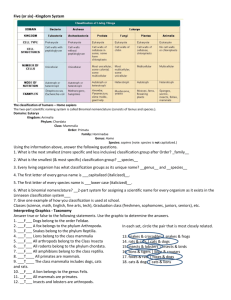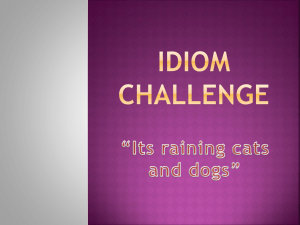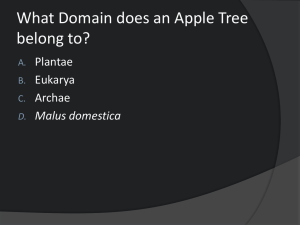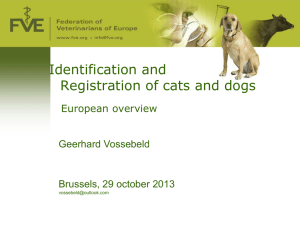Pretest Ch 17: Classification
advertisement
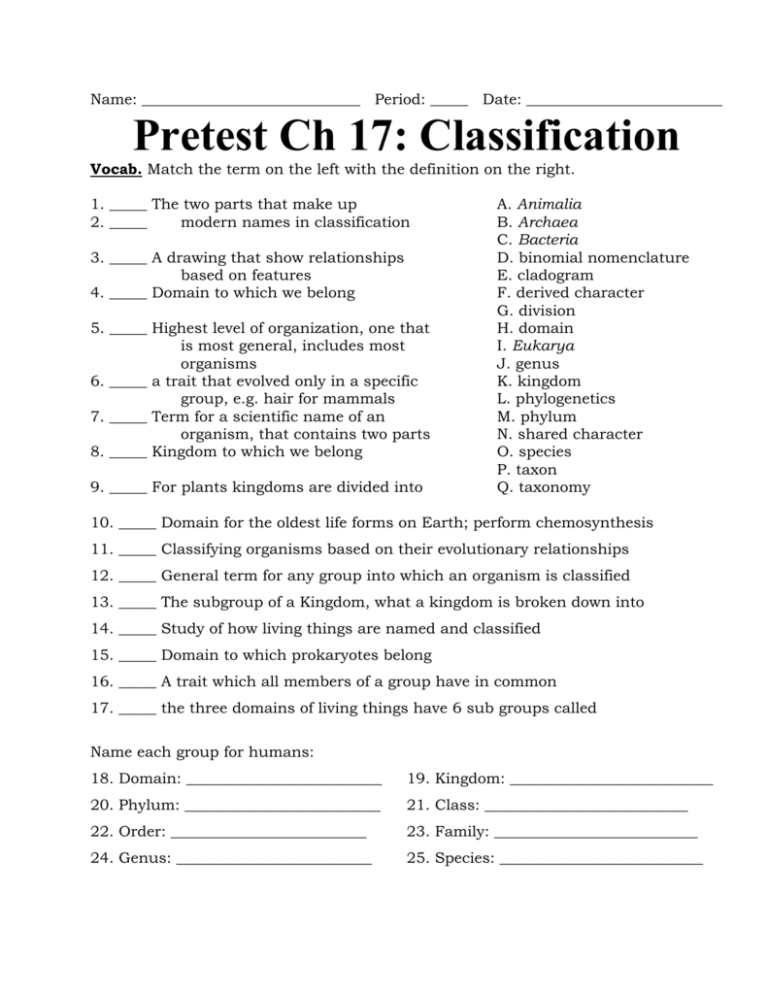
Name: _____________________________ Period: _____ Date: __________________________ Pretest Ch 17: Classification Vocab. Match the term on the left with the definition on the right. 1. _____ The two parts that make up 2. _____ modern names in classification 3. _____ A drawing that show relationships based on features 4. _____ Domain to which we belong 5. _____ Highest level of organization, one that is most general, includes most organisms 6. _____ a trait that evolved only in a specific group, e.g. hair for mammals 7. _____ Term for a scientific name of an organism, that contains two parts 8. _____ Kingdom to which we belong 9. _____ For plants kingdoms are divided into A. Animalia B. Archaea C. Bacteria D. binomial nomenclature E. cladogram F. derived character G. division H. domain I. Eukarya J. genus K. kingdom L. phylogenetics M. phylum N. shared character O. species P. taxon Q. taxonomy 10. _____ Domain for the oldest life forms on Earth; perform chemosynthesis 11. _____ Classifying organisms based on their evolutionary relationships 12. _____ General term for any group into which an organism is classified 13. _____ The subgroup of a Kingdom, what a kingdom is broken down into 14. _____ Study of how living things are named and classified 15. _____ Domain to which prokaryotes belong 16. _____ A trait which all members of a group have in common 17. _____ the three domains of living things have 6 sub groups called Name each group for humans: 18. Domain: __________________________ 19. Kingdom: ___________________________ 20. Phylum: __________________________ 21. Class: ___________________________ 22. Order: __________________________ 23. Family: ___________________________ 24. Genus: __________________________ 25. Species: ___________________________ Diagram. Use the diagram to answer the following True or False questions. Correct the false ones by changing the underlined word. 26. ________ Dogs belong to the order Felidae. 27. ________ A fox belongs to the Arthropoda. 28. ________ Snakes belong to the phylum Reptilia. 29. ________ Lions belong to the class Mammalia. 30. ________ All Arthropods belong to the Class Insecta. 31. ________ All rodents belong to phylum Chordata. 32. ________ All amphibians belong to class Reptilia. 33. ________ All primates are mammals. 34. ________ The class mammalia includes dogs, cats and rats. 35. ________ A cougar belongs in species Felis. 36. ________ All mammals are primates. 37. ________ Insects and lobsters are arthropods. In each pair, circle the two that are most closely related. 38. 39. 40. 41. 42. 43. snakes & crocodiles rats and cats insects and lobsters lions and tigers foxes and rats cats and dogs snakes and frogs cats and dogs insects and birds lions and cougars foxes and dogs cats and lions To the right is a phylogenetic tree. Use it to answer the following questions: 44. _________________________ the first organism to evolve from the common ancestor 45. _________________________ most closely related to humans. 46. _________________________ most closely related to squirrel monkeys 47. _________________________ was next to evolve after lemurs Fill in the chart below, using the words below the chart Kingdom: Type of cell Cell surface # cells Archaebacteria Gets food Eubacteria Protista Fungi Plantae Animalia Type of cell: eukaryotic or prokaryotic Cell surface: cell wall, cell membrane, or both # cells: 1 or more than 1 Gets food: autotrophic & chemosynthesis, autotrophic & photosynthesis, heterotrophic Answer Key__ Name: __ Period: _____ Date: __________________________ Pretest Ch 17: Classification Vocab. Match the term on the left with the definition on the right. O__ The two parts that make up 2. __J__ modern names in classification 1. __ E__ A drawing that show relationships 3. __ I based on features 4. __ __ Domain to which we belong H__ Highest level of organization, one that 5. __ is most general, includes most organisms F__ a trait that evolved only in a specific 6. __ group, e.g. hair for mammals D__ Term for a scientific name of an 7. __ organism, that contains two parts A__ Kingdom to which we belong 8. __ G__ For plants kingdoms are divided into 9. __ A. Animalia B. Archaea C. Bacteria D. binomial nomenclature E. cladogram F. derived character G. division H. domain I. Eukarya J. genus K. kingdom L. phylogenetics M. phylum N. shared character O. species P. taxon Q. taxonomy B__ Domain for the oldest life forms on Earth; perform chemosynthesis 10. __ L__ Classifying organisms based on their evolutionary relationships 11. __ P__ General term for any group into which an organism is classified 12. __ M__ The subgroup of a Kingdom, what a kingdom is broken down into 13. __ Q__ Study of how living things are named and classified 14. __ C__ Domain to which prokaryotes belong 15. __ N__ A trait which all members of a group have in common 16. __ K__ the three domains of living things have 6 sub groups called 17. __ Name each group for humans: Eukarya__ 18. Domain: __ Chordata___ 20. Phylum: ___ Animalia__ 19. Kingdom: __ 21. Class: __ Mammalia__ Primata__ 23. Family: __ Homo___ 25. Species: __ 22. Order: __ 24. Genus: _ Hominidae__ sapiens_ Diagram. Use the diagram to answer the following True or False questions. Correct the false ones by changing the underlined word. F____ Dogs belong to the order Felidae. Carnivora 26. ___ F___ A fox belongs to the Arthropoda. Chordata 27. ____ F___ Snakes belong to the phylum Reptilia. Class 28. ____ T___ Lions belong to the class Mammalia. 29. ____ F___ All Arthropods belong to the Class Insecta. Switch 30. ____ them…all insects belong to class arthropoda T___ All rodents belong to phylum Chordata. 31. ____ F___ All amphibians belong to class Reptilia. Amphibia 32. ____ T____ All primates are mammals. 33. ___ T____ The class mammalia includes dogs, cats and rats. 34. ___ F___ A cougar belongs in species Felis. 35. ____ Genus F___ All mammals are primates. Monkeys 36. ____ T___ Insects and lobsters are arthropods. 37. _____ In each pair, circle the two that are most closely related. 38. snakes & crocodiles snakes and frogs 39. rats and cats cats and dogs insects and lobsters 41. lions and tigers insects and birds 42. foxes and rats foxes and dogs cats and lions 40. 43. cats and dogs lions and cougars To the right is a phylogenetic tree. Use it to answer the following questions: 44. __ tarsier__ the first organism to evolve from the common ancestor colobus monkey__ most closely 45. _ related to humans. colobus monkey __ most closely 46. __ related to squirrel monkeys squirrel monkey __ was next to 47. _ evolve after lemurs Fill in the chart below, using the words below the chart Kingdom: Type of cell Cell surface # cells Archaebacteria prokaryotic both 1 prokaryotic both 1 Protista eukaryotic both* 1* Fungi eukaryotic membrane more than 1 eukaryotic both more than 1 eukaryotic membrane more than 1 Eubacteria Plantae Animalia Gets food autotrophic & chemosynthesis autotrophic & chemosynthesis, autotrophic & photosynthesis, autotrophic & photosynthesis, heterotrophic heterotrophic autotrophic & photosynthesis heterotrophic Type of cell: eukaryotic or prokaryotic Cell surface: cell wall, cell membrane, or both # cells: 1 or more than 1 Gets food: autotrophic & chemosynthesis, autotrophic & photosynthesis, heterotrophic

